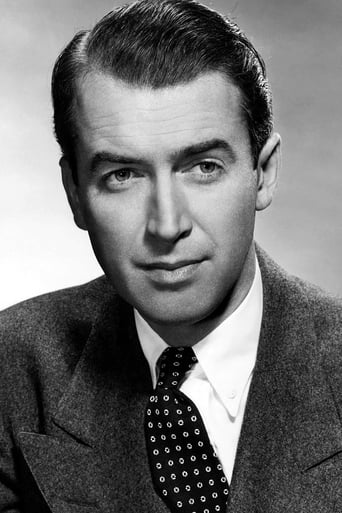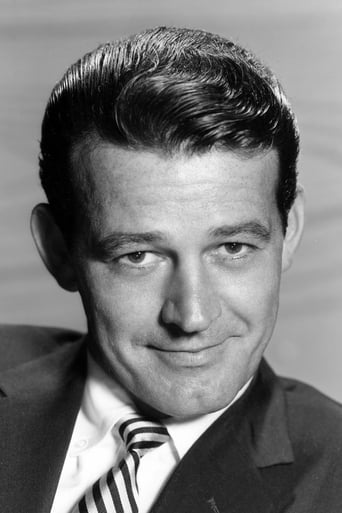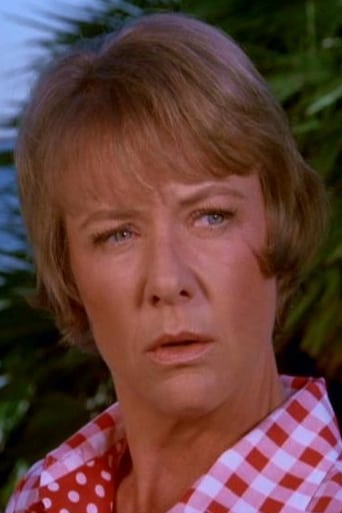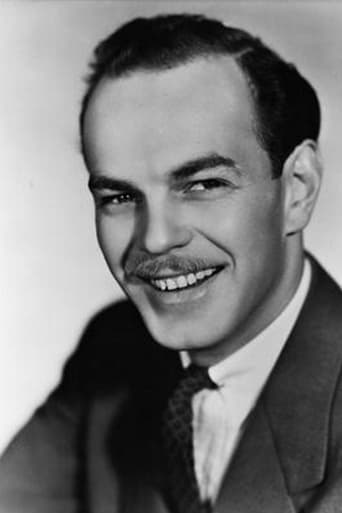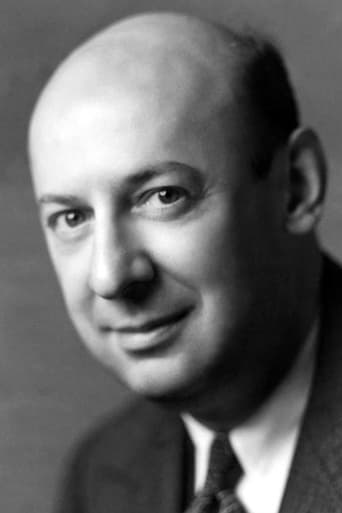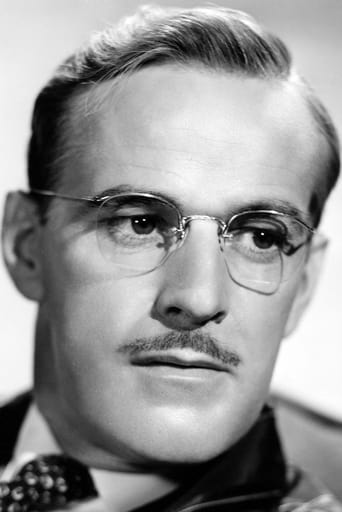moonspinner55
A mail-run pilot gets help financing the construction of a plane to cross the Atlantic from New York to Paris in 1927--with he himself alone at the controls. Director Billy Wilder, who also co-adapted Charles Lindbergh's memoir with Wendell Mayes and Charles Lederer, isn't quite able to work his customary high-toned humor into these proceedings, but his adroit pacing is certainly in evidence. James Stewart carries off the leading role without a hitch, and the final moments are surprisingly emotional. Not a dashing, robust picture, but an earthy, squirrelly film about human endurance and, indeed, spirit. There's a beautiful, seemingly throwaway moment with Stewart flying over Ireland and scaring the sheep, the shadow of the plane on the ground below as seen from Lindbergh's window. Technical details such as this make a tangible connection with audiences; one leaves the picture feeling uniquely satisfied. Supporting cast is workman-like; Stewart and the plane are the drawing cards. *** from ****
weezeralfalfa
The classic tale of the salient events up to and during the much celebrated first non-stop flight from the US to mainland Europe, by dark horse contender Charles Lindbergh: the youngest, least experienced, least well financed, and only solo pilot of a small group of contenders from both sides of the Atlantic. As mentioned, several teams had already died or wrecked their planes attempting to win the $25,000. prize for first success. The remaining contenders were: the favored Columbia team, the Richard Byrd team, and 'unlikely Lindy'. In May '27, the Bird tri-engine America was still being repaired from a crash during a test flight. The single engine Columbia had recently set a new non-stop endurance record of 55 hours: long enough to make it to Paris and beyond under reasonably favorable weather conditions(not brought out in the film). Two pilots were planned to soon fly it to Paris. As dramatized, Lindbergh had tried to buy this plane some months before, as everyone agreed it had the best chance for a single engine plane, which Lindbergh insisted on. But, the owner wanted to try to win the honor for himself, so Lindbergh had to look for a company willing to make a smaller, cheaper, version, and eventually found such.What wasn't brought out in the film is that all 3 of these planes had a recently improved radial engine: the Wright J-5, and all 3 would make a successful flight from near NYC to France or Germany within a few weeks of each other! Thus, the real 'hero' of this incremental aviation milestone should be recognized as the developers of the J-5 engine! The fact that Lindbergh happened to accomplish this feat a few weeks before the others was a quirk of fate: hence 'Lucky Lindy'. The Columbia was quite ready to challenge Lindbergh, but squabbling between the pilots and owner about how to divide up the monetary reward should they win led to the cancellation of their planned simultaneous take off with Lindbergh! This drama could have been included in the film in place of some of the section detailing the construction of Lindbergh's plane, the episode flying with the priest and some of the filler portions of the flight. Also, the ending could have generously included a shot of newspaper headlines of Chamberlin's subsequent solo pilot flight of the Columbia to Germany, with passenger, and Byrd's subsequent flight to France, demonstrating that a tri-engine plane, with a 4 man crew, using the same engine, could make the flight. These forgotten flights demonstrated that Lindbergh's highly modified, bare bones plane and single occupant was not necessary to accomplish his feat, thus providing further hope that transatlantic flights carrying cargo and passengers would be forthcoming. But, as Byrd correctly predicted, it would be many years before technological and other advances would allow regularly scheduled transatlantic passenger flights in planes(as opposed to Zeppelins). In fact, regular land to land US-Europe flight schedules didn't begin until the conclusion of WW II! Although briefly lionized almost as much as Lindberg, both in Germany and the US, neither of the two occupants of The Columbia proved to have an ounce of Lindberg's perceived charisma, hence were soon forgotten by the media and public. Chamberlin would soon pilot the first successful takeoff from a ship, even without the aid of a catapult. This film didn't do very well at the box office, but has subsequently been elevated as a classic. Perhaps the salient features of the story were still too well known by the public. Perhaps the film was too long and had some rather boring segments. Perhaps many Americans were offended by Lindbergh's subsequent close association with Nazi-Germany and anti-Jewish sentiments. Perhaps many thought that Jimmy Stewart, at nearly twice Lindbergh's age, was too old to convincingly portray his youthful enthusiasm. Lindbergh preferred Anthony Perkins for the role. I thought Stewart was fine. I have already made some suggestions on how the film's interest could have been improved, primarily by toning down the hero worship, cutting out the least interesting or relevant segments, and substituting some scenes devoted to his worthy competitors.The hazards of Lindbergh's brief career as an air mail pilot, just prior to his quest for this fame is dramatized in the first portion. Several episodes of his prior experiences as a serious or stunt pilot are dramatized later as flashbacks during his epic flight. This was an excellent idea, with some comedic elements added. Although not much emphasized, Lindbergh credited his training as an army corp pilot as being the most important experience in preparing him for his epic flight. In the film, his experience as a mail pilot in bad weather is portrayed as being most important.The film dramatizes some of Lindbergh's key problems getting aloft and during the flight: the muddy take off strip after days of rain, just clearing the telephone wires and trees, icing of his wings and carburetor, periodic nearly falling asleep, and balancing the depletion of his 5 gas tanks. It fails to mention the importance of his periodic reductions in engine RPM setting with the gradual depletion of his fuel, thus extending his range. Also, since his plane didn't have a variable propeller pitch pilot control, it was critical to set the pitch just low enough to get airborne with his weight, but high enough to allow reasonably efficient utilization of fuel during cruising.
Applause Meter
Director Billy Wilder was a Jew who immigrated to the USA from Germany in the 1930s and in consequence escaped probable incineration in Nazi ovens. That Wilder would, in 1957, make a film honoring a man notorious for his fascist sympathies---well the fact of that is to me incomphrensible. Lindbergh was also a proponent of eugenics, the murder of individuals or categories of individuals adjudicated unfit to live. And this man wasn't called "Lucky Lindy" for nothing; others had died attempting the same Atlantic crossing he succeeded in accomplishing. Why? Well he was jut lucky. No god-like qualifications required. There were actors that purportedly turned down the role of Lindbergh for the very reasons mentioned above. The man's politics and values were repugnant. Not obviously so for Jimmy Stewart, a staunch political conservative who had a lifelong obsession with aviation. The 47- year-old Stewart looking every year of his age lobbied and won the role of the 20-something Charles Lindbergh. The film is just another Hollywood glorification, a whitewash of a historical figure, more fiction than fact. Stewart is the stock Jimmy Stewart readily recognizable as the simple, unpretentious, plainspoken "All American" guy he portrayed in all his films. Nothing like the real Lindbergh who by all accounts was a man ruled by hubris, an arrogant man with an unshakeable confidence in his own abilities and beliefs. Stewart gives us a determined Lindbergh, yet one humble and self-effacing, far removed from who Lindbergh actually was. Aside from the significant ugly back-story to this production, it is just plain and simple, a big bore. The script lacks any nuance of character; it is full of the tropes associated with grit and heroism. Are we supposed to be amused by the monologues Stewart has with an uncredited character, the fly who does a very convincing job portraying an unexpected cockpit stole away getting a free ride to Paris? There needs to be another demarcation to "grade" films like "The Spirit of St. Louis." A little icon of a bomb should be available for stinkers like this.

